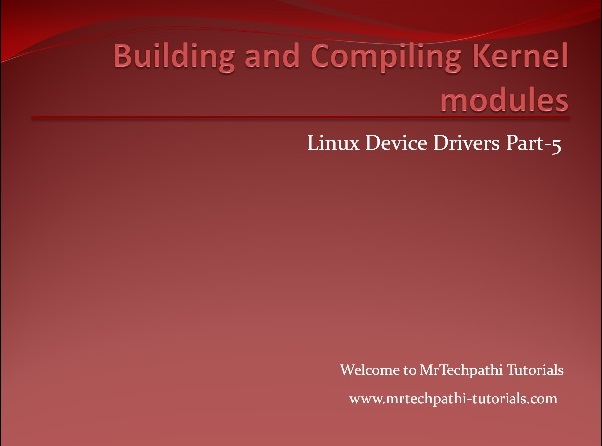In this part, we are going to discus about , The difference between Kernel Modules (KM) and Applications (APs) in brief . Before proceeding further, I strongly recommend to watch my earlier videos from "Linux Device Drivers Part -1 to Part 6". Though there are many differences, to keep it simple and to explain in brief , I have hand picked few differences and listed them as topics form, which can be easily remembered and recollected when required We compare below 6 topics between Kernel Modules (KM) and Applications (APs) 1. Initialisation 2. Which are Event Driven KM's or AP’s 3. About Exit Procedure in KM's or AP’s 4. Ability to unload a module 5. Linking stage 6. Handling faults This tutorial covers only brief description of all topics listed. This will help us to understand upcoming sessions with ease Lets start with our first topic, 1. Initialisation When we invoke a application, it starts a...






